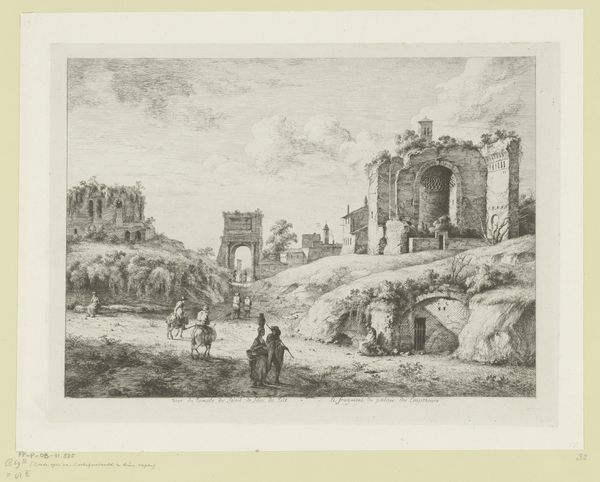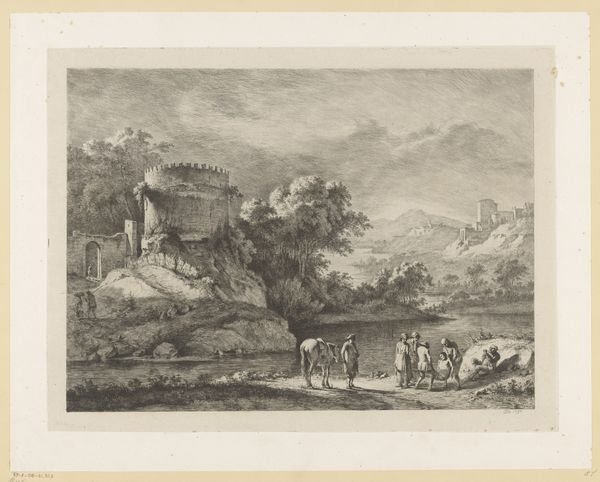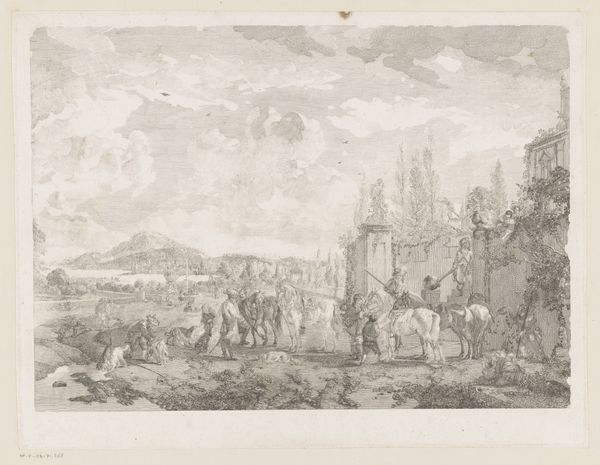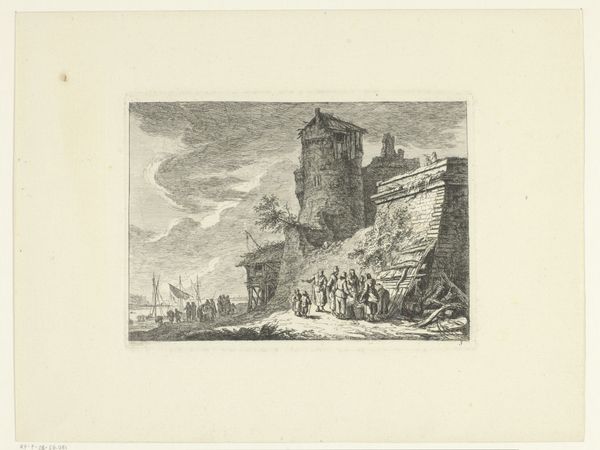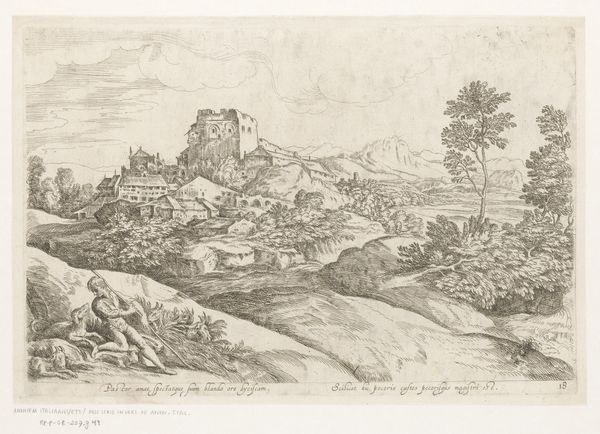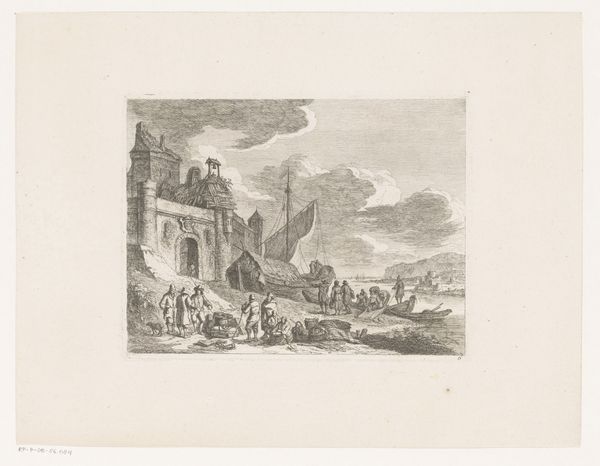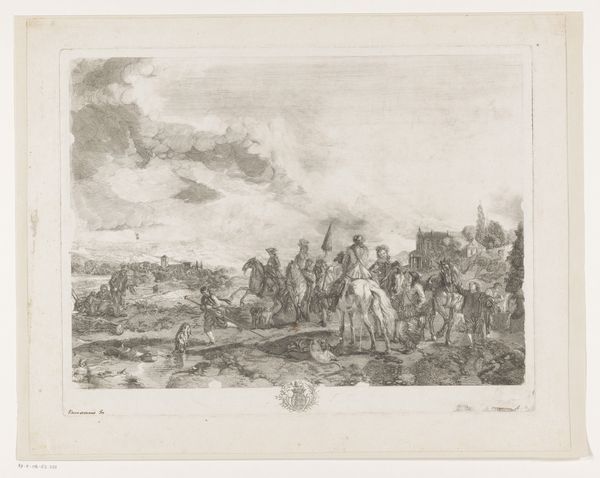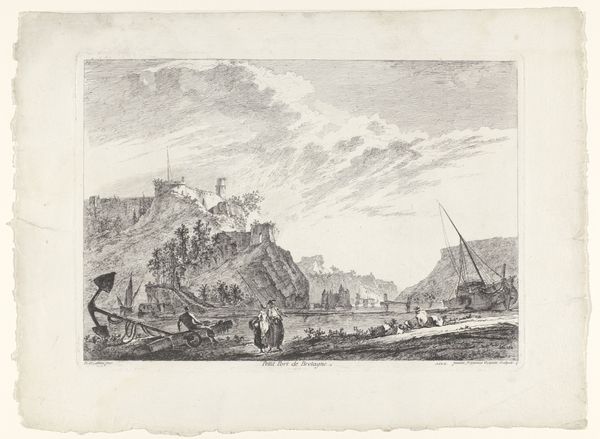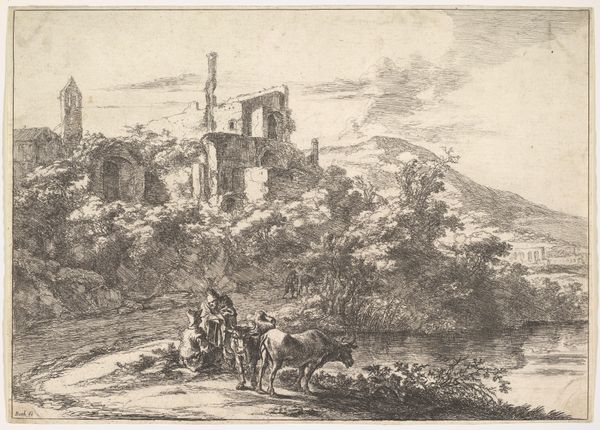
drawing, etching
drawing
etching
landscape
romanesque
realism
Dimensions: height 294 mm, width 377 mm
Copyright: Rijks Museum: Open Domain
Curator: Looking at this artwork brings to mind so many questions about how we view and interact with the past. Editor: Absolutely. "Landscape with a View of the Tomb of Caecilia Metella," an etching by Jean Jacques de Boissieu, dating back to 1780. The ruined tomb dominates the scene, yet there's also this sense of everyday life continuing with the herders and their livestock. It’s such a striking contrast! What strikes you about it? Curator: The layering of history is palpable. Here, the ancient Roman tomb isn't just a ruin but an integral part of the contemporary 18th-century landscape and its visual culture. Consider the function of depicting such ruins. Boissieu and his contemporaries weren’t simply documenting what they saw. They were participating in a broader cultural phenomenon: the Grand Tour and its souvenir industry. Do you think the choice of this particular ruin might be a statement in itself? Editor: Maybe it was a familiar stop on the tourist circuit at that time? It also seems, through the artist’s hand, as if there is some sort of romantic sensibility attached to these fallen or decaying classical architectures and buildings. Curator: Precisely! The "romantic sensibility" you observe reflects the growing fascination in the late 18th century with the picturesque, even the sublime aspects of ruins. These images played a significant role in shaping perceptions of Rome and its empire, casting a long shadow on later artistic productions, even influencing the heritage conservation practices we implement today. So it's not just about capturing a place but about participating in the market and cultural representation of that place. In which spaces do you feel something akin to what those travelers probably experienced, and are they at all the same experience, albeit mediated through mass imagery and accessibility? Editor: That's really insightful. It's fascinating how the artwork is not just a visual record but a participant in shaping cultural perceptions and a commodity for the upper-class tourists! The piece highlights how the art market intertwines with the politics of imagery. Curator: Indeed. And remembering that context is key to unraveling some of its rich layers of meaning, enabling conversations with these artworks across time.
Comments
No comments
Be the first to comment and join the conversation on the ultimate creative platform.

